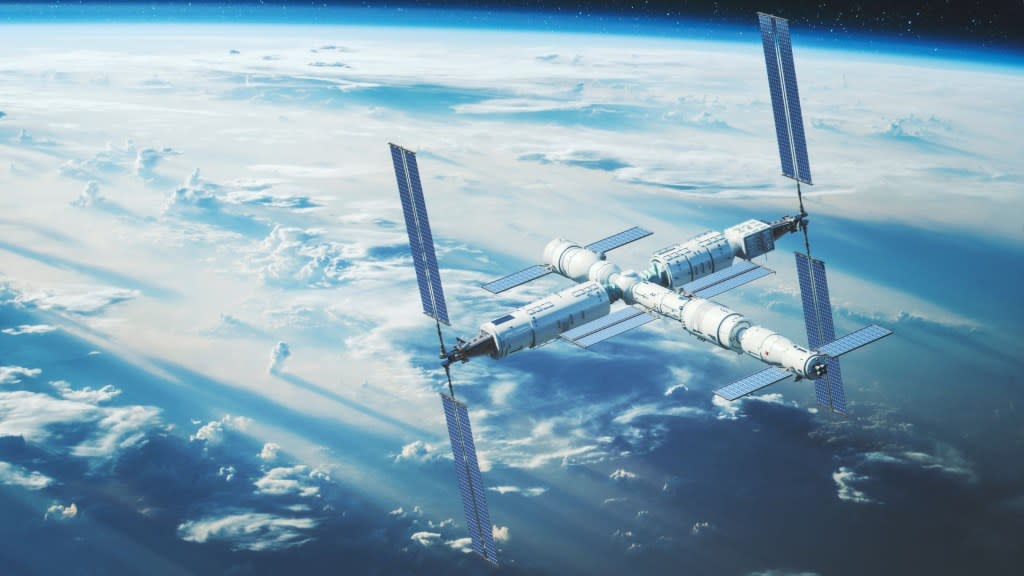China’s Shenzhou-19 Demonstrates Artificial Photosynthesis
Recently, China’s Shenzhou-19 crew aboard the Tiangong space station made advancement in space exploration by successfully conducting the first in-orbit demonstration of “artificial photosynthesis” technology. This breakthrough allows for the production of oxygen and rocket fuel ingredients in space, enhancing future missions, including a planned crewed moon landing by 2030.
Artificial Photosynthesis Technology
- Artificial photosynthesis mimics the natural process used by plants to convert sunlight, carbon dioxide, and water into oxygen and glucose.
- The technology developed by the Shenzhou-19 crew utilises semiconductor catalysts to convert carbon dioxide and water into oxygen and hydrocarbon fuels.
- This innovative approach reduces energy consumption, operating efficiently at room temperature and standard atmospheric pressure.
Key Experiments Conducted
- The crew conducted 12 experiments using a specially designed drawer-shaped device.
- These experiments focused on several critical technologies.
- They included the conversion of carbon dioxide at room temperature, gas transport and separation in microgravity, and real-time detection of reaction products. The successful conversion resulted in the production of ethylene, a potential rocket fuel.
Implications for Space Exploration
- The successful demonstration of this technology is very important for future space missions.
- It promises to provide essential resources for long-duration missions beyond Earth.
- By generating oxygen and fuel in space, astronauts can reduce their reliance on supplies from Earth.
- This capability is crucial for exploring distant celestial bodies and for potential human colonisation.
Comparison with Existing Technologies
- Previously, the International Space Station (ISS) relied on energy-intensive methods to generate breathable air.
- It utilised solar panels to split water into hydrogen and oxygen.
- In contrast, the artificial photosynthesis method is more efficient and sustainable for long-term missions.
- Studies indicate that oxygen generation on the ISS consumes portion of its energy, making it less practical for extended missions.
Future Research Directions
China’s research into extraterrestrial artificial photosynthesis began in 2015. Ongoing studies will focus on optimising the technology for different environments, including the Moon and Mars. Researchers aim to tailor catalyst adjustments to produce various fuels, such as methane, which could further enhance propulsion systems for spacecraft.
Significance for Human Survival in Space
The development of artificial photosynthesis technology could play a vital role in ensuring human survival during prolonged space travel. By creating a sustainable source of oxygen and fuel, astronauts can maintain life support systems without constant resupply from Earth. This advancement marks step toward making long-term human presence in space a reality.
Month: Current Affairs - February, 2025
Category: Science & Technology Current Affairs







